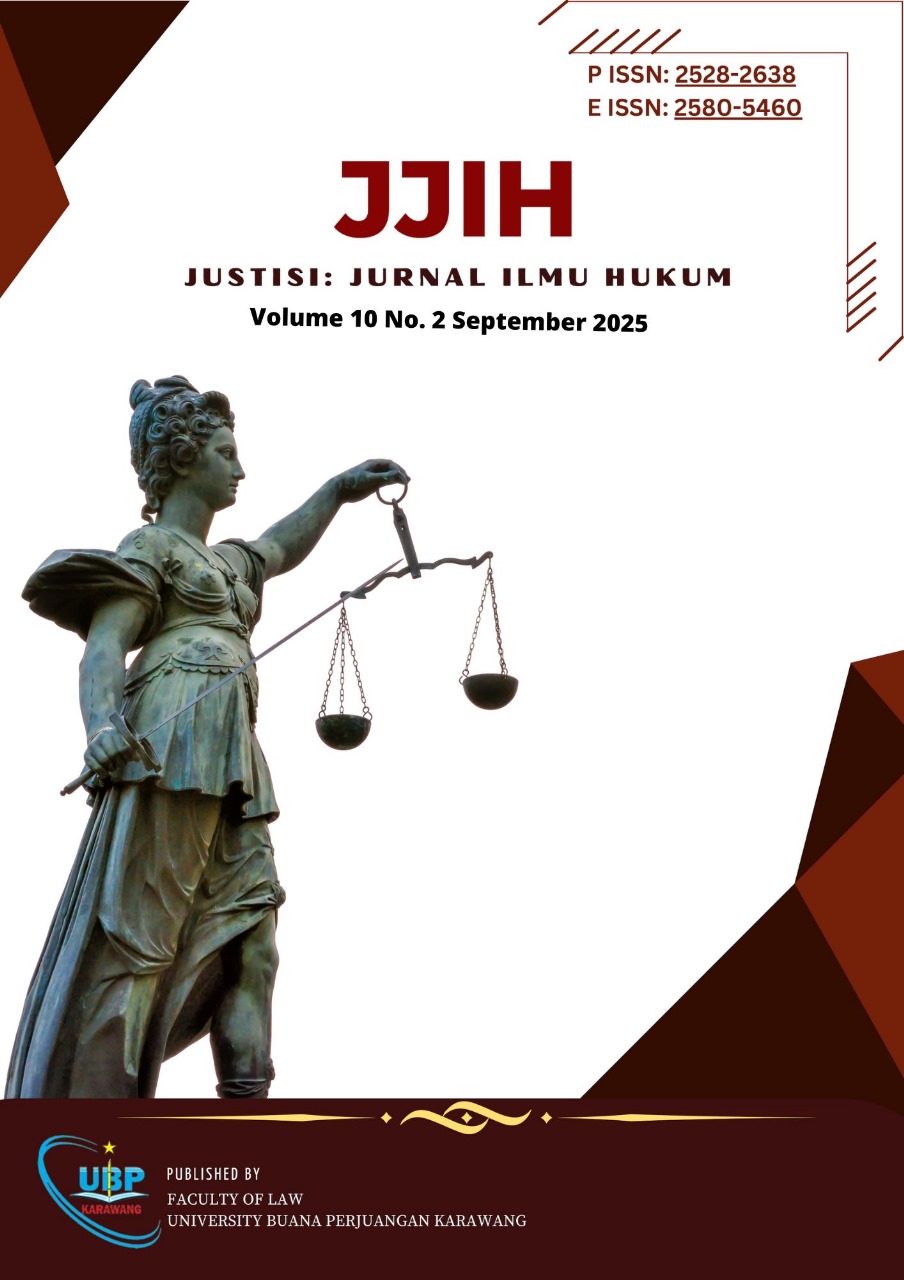CASE ANALYSIS OF CONSTITUTIONAL COURT DECISION NO. 46/PUU-VIII/2010 FROM A JURIDICAL PERSPECTIVE (LOGICAL, CRITICAL, AND RADICAL)
DOI:
https://doi.org/10.36805/4mvggq30Keywords:
Legal Reasoning, Juridical Thinking, Family Law, Children Born Out of Wedlock.Abstract
Legal reasoning is an intellectual process of discovering, interpreting, and applying the law appropriately in resolving legal issues. This study aims to analyze the objectives of legal reasoning through three forms of juridical thinking, namely logical, critical, and radical, by examining its application in Constitutional Court Decision Number 46/PUU-VIII/2010. The type of research used is normative legal research with a statute approach and case approach. The results show that the Constitutional Court used logical legal thinking to ensure consistency between Article 43 paragraph (1) of the Marriage Law and the 1945 Constitution, thereby guaranteeing legal certainty. Critical legal thinking was applied by prioritizing the principle of the best interests of the child to avoid discrimination against children born out of wedlock. Meanwhile, radical legal thinking is manifested through changes in the interpretation of norms that fundamentally change the paradigm of family law in Indonesia, so that children born out of wedlock have a civil relationship with their biological fathers as long as it can be legally proven. The integration of these three forms of legal thinking proves that legal reasoning not only upholds written norms but also adapts the law to the values of justice, benefit, and the development of modern society
References
Ali, Achmad. Menguak Teori Hukum Dan Teori Peradilan. Jakarta: Kencana, 2012.
Asshiddiqie, Jimly. Konstitusi Dan Konstitusionalisme Indonesia. Jakarta: Sinar Grafika, 2011.
Djumikasih. “Implikasi Yuridis Putusan MK Nomor 46/PUU-VIII/ 2010 Terhadap Akta Kelahiran Anak Luar Kawin.” ARENA HUKUM 6, no. 2 (2013): 152–289. https://doi.org/10.21776/ub.arenahukum.2013.00602.4.
Dworkin, Ronald. Law’s Empire. Cambridge: Belknap Press, 1968.
Faisyah, Nur, Muchamad Ali Safa’at, and Riana Susmayanti. “Constitutional Parameters of Judicial Activism in the Indonesian Constitutional Court.” International Journal of Business, Law, and Education 6, no. 1 (2025): 724–38. https://doi.org/10.56442/ijble.v6i1.1073.
Hadjon, Philipus M. Perlindungan Hukum Bagi Rakyat Di Indonesia. Surabaya: Bina Ilmu, 1987.
Heryanto, Ariel. “The Development of Development.” Indonesia 46, 1988, 1–24. https://arielheryanto.com/2016/03/04/the-development-of-development/.
Kelsen, Hans. General Theory of Law and State. Cambridge: Harvard University Press, 1961.
Kennedy, Duncan. “Legal Education and the Reproduction of Hierarchy: A Polemic Againts the System.” Michigan Law Review 82, no. 4 (1984): 961–65. https://repository.law.umich.edu/mlr/vol82/iss4/39/.
Marzuki, Peter Mahmud. Penelitian Hukum. Jakarta: Kencana, 2014.
———. Pengantar Ilmu Hukum. Jakarta: Kencana, 2017.
Mertokusumo, Sudikno. Penemuan Hukum: Sebuah Pengantar. Yogyakarta: Liberty, 2009.
Putusan Mahkamah Konstitusi Nomor 46/PUU-VIII/2010, 2010.
Radbruch, Gustav. Legal Philosophy. Oxford: Oxford University Press, 2006.
Rahardjo, Satjipto. Hukum Progresif: Hukum Yang Membebaskan. Jakarta: Kompas, 2009.
———. Ilmu Hukum. Cet. 6. Bandung: Citra Aditya Bakti, 2006.
Soekanto, Soerjono, and Sri Mamudji. Penelitian Hukum Normatif: Suatu Tinjauan Singkat. Jakarta: PT. RajaGrafindo Persada, 2010.
Susmayanti, Riana. “Konsep Tanggung Jawab Sosial Dalam Peraturan Perundang-Undangan Di Indonesia.” ARENA HUKUM 7, no. 3 (2014): 363–87. https://doi.org/10.21776/ub.arenahukum.2014.00703.4.
Tanya, Bernard L., Yoan N. Simanjuntak, and Markus Y. Hage. Teori Hukum: Strategi Tertib Manusia Lintas Ruang Dan Generasi. Yogyakarta: Genta Publishing, 2013.
Undang-Undang Dasar Negara Republik Indonesia Tahun 1945, 1945.
Undang-Undang Nomor 1 Tahun 1974 Tentang Perkawinan, 1974.
Unger, Roberto. The Critical Legal Studies Movement. London: Verso, 1986.
United Nations, Convention on the Rights of the Child, 1989.

Downloads
Published
Issue
Section
License
Copyright (c) 2025 Aria Roby Putra, Riana Susmayanti

This work is licensed under a Creative Commons Attribution 4.0 International License.
Deposit & Pengarsipan Mandiri
Naskah artikel versi pra-cetak (draf awal), versi diterima (draf akhir), dan versi penerbit (PDF terbitan) boleh diarsipkan mandiri di situs web pribadi atau repositori institusional milik penulis dengan tetap mencantumkan status progres dan sumber asli yang merujuk pada website jurnal ini.
Preservasi & Pengarsipan Sistem
Jurnal ini tergabung dalam jaringan PKP Preservation Network, yang menyediakan layanan preservasi dan pengarsipan secara otomatis apabila terjadi sesuatu yang menyebabkan jurnal ini tidak terbit lagi (trigger event).



